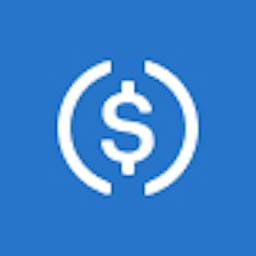Easy way to Buy  USDB (USDB) Online with Wigwam crypto app
USDB (USDB) Online with Wigwam crypto app

How to buy and hold USDB with Wigwam
1. Choose a token number that you want to buy
2. Create a wallet, where to store your crypto
3. Pay with credit card
4. Check your crypto in the created wallet
Why Wigwam is the best crypto wallet for USDB (USDB) storage
Ultimate security, only you have access to your USDB tokens
Send, Receive, Store your USDB tokens free and without limitations
Check the real-time value of your crypto tokens
Buy, Sell, Exchange USDB (USDB) directly in the wallet
Stake USDB (USDB) by connecting Wigwam to the popular DeFi dApps
No KYC or personal data collected

USDB token review
USDB is a USD pegged stablecoin created on the Blast blockchain, the unique Ethereum L2 with native yield for ETH and stablecoins.
Blast revenue comes from ETH stakes and RWA protocols. These returns are automatically returned to Blast users.
USDB stablecoin on Blast automatically earns 7% yield + Blast Points. 17% of Blast tokens were distributed during the initial airdrop. Of that 17%, 7% is allocated to users who have connected Ether or US Dollar Blast (USDB) to the Blast network. These are Blast Points.
Economic value
There are currently 296,632,635 USDBs in circulation. It has gained popularity as one of the most useful holders on the market, providing solutions for safe and easy DeFi operations within the Blast system. The number of holders is now 219,482. The market capitalization of the circulating supply is $409,911,193.
The main challenge for the USDB is to maintain its stability and peg to the US dollar while ensuring adequate liquidity and trust in the decentralized finance (DeFi) ecosystem.
Regulatory risks can also affect USDB's stability.
Use cases
USDB provides stability and liquidity to all activities on the Blast platform. Here's a list of how USDB works in this system:
1. Stable value:
The USDB maintains a stable value pegged to the US dollar (1 USDB ≈ $1). This stability allows users to make transactions safely and securely.
2. Staking and revenue generation:
Users who transfer stablecoins through the bridge receive USDB, Blast's auto-rebasing stablecoin. The yield for USDB is generated by MakerDAO's on-chain T-Bill protocol, and USDB can be exchanged for DAI when bridged back to Ethereum.
Challenges
Recently, USDB lost 6% of its value due to market instability. The price of USDB plummeted to $0.94, although it later recovered to the $1 level.
In addition, many investors complained that they did not receive enough tokens during the initial BLAST airdrop. These factors may affect the further development and stability of the whole system.
FAQ
Go to the official website of the USDB (Blast) project or its parent protocol (e.g., Blast) to find detailed instructions or supported exchanges for purchasing USDB.
USDT is an ERC-20 token, so you can track all transactions using Blastscan.io or any other blockchain explorer of your choice.
To add USDB (Blast) to your blockchain wallet, you'll need to manually add the token using its contract address. Here's a general guide to adding USDB to popular wallets like MetaMask or Trust Wallet:
Steps to add USDB (Blast) to your wallet:
1. Find the USDB contract address:
- Go to a trusted source like the official Blast website, CoinGecko, CoinMarketCap, or a blockchain explorer like Etherscan.
- Search for USDB and find the token's contract address. This is crucial as entering the wrong contract address could result in adding the wrong token.
2. Open your wallet:
- MetaMask/Wigwam: Open your MetaMask/Wigwam wallet in your browser or mobile application.
- Trust Wallet: Open the Trust Wallet application on your phone.
3. Add a custom token.
4. Confirm the addition:
- After adding the token, USDB should appear in your wallet under the Assets tab or in the token list.
The stability and value of USDB depend on the issuer's ability to maintain the peg to the underlying asset (e.g., USD). If the issuer faces financial trouble or fails to manage reserves properly, it could affect the token's value.




